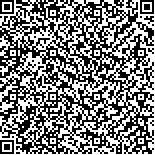吴越,徐文炜,刘晓伟,徐清,武曙燕.重复经颅磁刺激对阿尔茨海默病患者精神行为症状及认知功能的影响[J].中华物理医学与康复杂志,2017,39(2):131-135
扫码阅读全文

|
| 重复经颅磁刺激对阿尔茨海默病患者精神行为症状及认知功能的影响 |
|
| |
| DOI: |
| 中文关键词: 重复经颅磁刺激 阿尔茨海默病 精神行为症状 认知功能 |
| 英文关键词: |
| 基金项目:无锡市科技发展资金项目(CSE31N1323) |
|
| 摘要点击次数: 2402 |
| 全文下载次数: 3926 |
| 中文摘要: |
| 目的观察不同频率重复经颅磁刺激(rTMS)对阿尔茨海默病(AD)患者精神行为症状及认知功能的影响。 方法采用随机数字表法将72例伴有精神行为症状的AD患者分为高频组、低频组及对照组,每组24例。所有患者均给予低剂量利培酮口服,高频组、低频组患者分别辅以rTMS治疗(rTMS刺激频率分别为10Hz、1Hz),对照组则同时辅以rTMS伪刺激。所有患者rTMS刺激部位均选择左、右侧前额叶背外侧皮质区,磁刺激强度为80%运动阈值(MT),每次治疗30min,每周治疗5次,共持续治疗4周。于治疗前、后分别采用AD行为症状量表(BEHAVE-AD)、简易智能状态检查量表(MMSE)对3组患者进行疗效评定。 结果治疗2周后,高频组患者BEHAVE-AD评分[(13.84±6.10)分]较治疗前[(16.75±6.26)分]明显降低(P<0.05),且明显低于低频组及对照组水平[分别为(15.33±6.27)分和(15.46±6.57)分](P<0.05)。治疗4周后,低频组及对照组患者BEHAVE-AD评分[分别为(12.87±4.16)分和(13.29±4.07)分]均较治疗前明显降低(P<0.05),并且以高频组患者BEHAVE-AD评分[(10.12±3.31)分]的降低幅度尤为显著(P<0.01),与低频组、对照组间差异均具有统计学意义(P<0.05)。治疗4周后,高频组MMSE评分[(16.89±4.30)分]较治疗前明显增高(P<0.01),且明显高于低频组及对照组水平[分别为(14.50±4.13)分]和(13.92±3.68)分](P<0.05)。治疗4周后高频组、低频组及对照组临床有效率分别为87.50%、58.33%和54.17%,3组患者治疗有效率组间差异具有统计学意义(P<0.05)。 结论高频(10 Hz)rTMS对AD患者精神行为症状具有明显缓解作用,同时还能改善患者认知功能,该疗法值得临床进一步研究、推广。 |
| 英文摘要: |
| Objective To assess the effect of repetitive transcranial magnetic stimulation (rTMS) at different frequencies on behavioral and psychological symptoms and cognitive function in patients with Alzheimer′s disease. MethodsSeventy-two patients were randomly divided into a high frequency group, a low frequency group and a control group (n=24 for each), and given 10 Hz, 1 Hz or sham rTMS over the left and right dorsolateral prefrontal cortex at an intensity was 80% of each patient′s movement threshold. The stimulation was for 30 min a day, five days a week. During the 4 weeks of treatment, risperidone was used at a fixed dose of 1 mg per day for all patients. Before and after the treatment, all 3 groups were assessed using the behavioral pathology in Alzheimer′s disease rating scale (BEHAVE-AD) and the mini-mental state examination (MMSE). Results Two weeks after the treatment, the average BEHAVE-AD score of the high frequency group had decreased significantly from (16.75±6.26) to (13.84±6.10) , significantly lower than the low frequency and the control groups′ averages. Two weeks later, the average BEHAVE-AD scores of the 3 groups were significantly lower than before the treatment, but the decrease of the high frequency group was of significantly greater compared to the other 2 groups. Four weeks after the treatment the average MMSE score of the high frequency group was significantly better than before the treatment (P<0.01), and better than the low frequency and the control group′s averages. The effectiveness rates of the high frequency group, the low frequency group and the control group were 88%, 58% and 54% respectively, all significantly different. ConclusionHigh frequency (10 Hz) rTMS combined with risperidone can improve the behavioral and psychological symptoms and cognitive function of AD patients, while low frequency (1 Hz) rTMS does not have obvious effects. |
|
查看全文
查看/发表评论 下载PDF阅读器 |
| 关闭 |
|
|
|